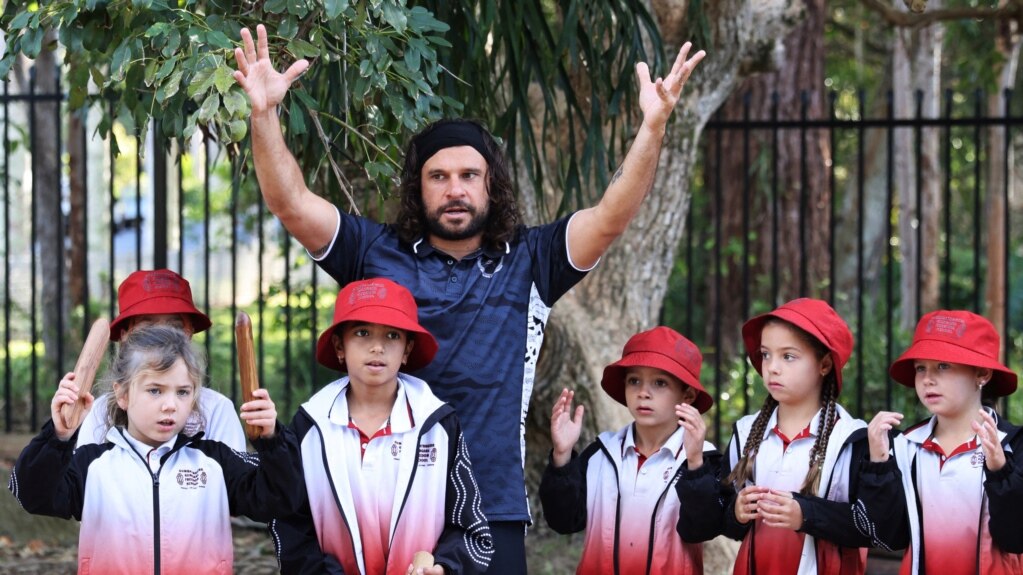Some of Australia’s Indigenous communities are hoping a national vote that would change the country’s constitution could give native people more of a voice in the government.
The vote, known as a referendum, would put in the nation’s constitution a way for Indigenous people to advise Parliament on policies that affect their lives. The vote, officially called “Voice to Parliament,” will be held on October 14.
Leaders of some Indigenous groups are looking to the process to help save their cultures and languages. Clark Webb is seeking to do that for his native, or Aboriginal, community, the Gumbaynggirr people.
Webb recently led a class of schoolchildren as they danced to native songs. "Opening our own schools, that's sovereignty in action," Webb said.
He and others want to bring back the Indigenous language spoken in Coffs Harbor, a coastal town about 500 kilometers north of Sydney. "And so we need that 'Voice' there to lobby for that."
Webb started the Gumbaynggirr Giingana Freedom School last year. It was the first bilingual Indigenous school in Australia’s most populous state of New South Wales.
The effort is part of an attempt to bring back dozens of languages that are close to dying out. It is being supported by federal and state governments.
Many of Australia's Indigenous people see the recovery of languages as very important to the survival of their cultures.
Oldest culture
Australia’s Indigenous and Torres Strait Islander communities are perhaps the world’s oldest. They have a history on the continent dating back tens of thousands of years.
After colonization by Great Britain in 1788, the people increasingly faced discrimination, which continued long after Australia became a nation in 1901.
Government officials often moved Indigenous people from their traditional lands, known as Country. They forcibly separated Indigenous children from their families, resulting in a "stolen generation” from the mid-19th century to the 1970s.
As late as the 1980s, officials punished Indigenous people for speaking their languages.
"I think, growing up, I knew there was something missing from my life," Webb said. "And as I got older, I realized that … was our language."
Webb estimates there are now about 30 proficient or highly proficient speakers of Gumbaynggirr. Among them is his nine-year-old daughter.
Language revival
Australia has one of the world's highest rates of language loss in the world.
At the time of European colonization, more than 250 Indigenous languages, including 800 dialects, were believed to have been spoken on the continent.
But the most recent population data shows that more than 150 languages were still being spoken in 2021. However, just 9.5 percent of indigenous Australians reported speaking one or more languages at home.
Ray Ingrey is one of a handful of people fluent in Dharawal. It was the first language heard by British explorer Captain James Cook when he landed in Australia in 1770.
Ingrey heads the Gujaga Foundation. It was founded in 2019 to bring back the language. He said government policies in those days severely hurt the ability to pass the language on from one generation to the next.
Officials had barred the grandparents of Webb and Ingrey from speaking their native languages. And some relatives were threatened by the police for speaking it anywhere.
Author and teacher Jasmine Seymour is leading efforts to revive the Dharug Aboriginal language among hundreds of schoolchildren in Sydney. Most of the children are non-Indigenous.
Seymour is related to Maria Lock, the first Aboriginal person to marry a European settler and one of the first admitted to a school to learn English.
"To be at the other end of history, where my language is being revitalized in school, is completely profound," she said.
I'm Dan Novak.

